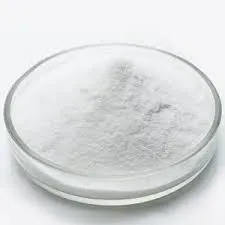
Dic . 05, 2024 21:46 Back to list
Current Trends in Hydroxyethyl Cellulose Pricing and Market Analysis
Understanding Hydroxyethyl Cellulose (HEC) Prices Trends and Factors Influencing Costs
Hydroxyethyl cellulose (HEC) is a non-ionic, water-soluble polymer derived from cellulose, and it's widely used in various applications, including pharmaceuticals, construction, cosmetics, and food products. As businesses and manufacturers increasingly rely on HEC for its versatility and performance, understanding the pricing dynamics of this essential polymer becomes crucial.
Current Pricing Trends
The price of hydroxyethyl cellulose can fluctuate significantly based on multiple factors, including raw material costs, production methods, supply chain logistics, and market demand. As of late 2023, the average price of HEC has seen an upward trend due to increased production costs associated with raw materials and energy. Depending on the purity and grade, HEC prices typically range from $5 to $20 per kilogram. Variability in prices can be attributed to geographic market differences, availability of raw materials, and the scale of production.
Factors Influencing HEC Prices
1. Raw Material Costs HEC is produced from cellulose, which is primarily derived from wood pulp and cotton. Fluctuations in the price of these raw materials directly impact HEC pricing. For instance, a rise in wood prices due to environmental regulations or reduced timber supply can lead to increased HEC costs.
2. Production Processes The synthesis of HEC involves specific chemical reactions, including etherification. The complexity of these processes, along with the need for specialized equipment and adherence to strict quality control measures, influences production costs. Innovations in production technology can lead to improved efficiency and potentially reduce costs, but the initial investment can be significant.
3. Supply Chain Dynamics The global supply chain remains vulnerable to disruptions caused by geopolitical tensions, trade policies, and logistical challenges, such as shipping delays and increased freight costs. Such disruptions can cause prices to spike unexpectedly. Moreover, in periods of economic recovery or increased demand—like post-pandemic scenarios—supply chain bottlenecks may further exacerbate price increases.
hydroxyethyl cellulose price

4. Market Demand The demand for HEC is driven largely by its applications in various industries. For example, the construction industry frequently uses HEC as a thickener and stabilizer in cement and mortar. A surge in construction projects can lead to higher HEC demand, pushing prices upwards. Similarly, the cosmetic and personal care sectors have seen growing use of HEC due to consumer preferences for natural and sustainable products.
5. Regulatory Factors Environmental regulations surrounding the production and use of chemicals can also influence HEC prices. Stricter regulations may necessitate costly modifications in manufacturing processes, which can then be passed on to consumers.
Future Outlook
Looking towards 2024 and beyond, the hydroxyethyl cellulose market is expected to continue evolving. The growing trend towards sustainability and environmentally friendly products can create new opportunities for HEC, particularly in sectors aimed at reducing their ecological footprint. Innovations in bio-based production methods could also emerge, impacting supply and pricing positively.
Furthermore, as global economies stabilize and grow, increased infrastructure projects and consumer spending could lead to heightened demand for HEC, possibly resulting in further price increases. Conversely, advances in manufacturing technologies and alternative sourcing strategies might present opportunities to stabilize or reduce prices.
Conclusion
Hydroxyethyl cellulose is a critical ingredient across a myriad of industries, and its pricing is influenced by numerous interrelated factors. For manufacturers, staying informed about market trends and raw material supply dynamics is essential for managing costs effectively. As the demand for sustainable and versatile materials grows, understanding these price dynamics will help businesses navigate the challenges of the HEC market successfully. With the right strategies, industry players can not only mitigate costs but also enhance their competitive advantage in the evolving market landscape.
-
Unlocking the Benefits of HPMC Products: A Gateway to Versatile Applications
NewsAug.07,2025
-
Unleashing the Potential of HPMC Ashland: A Comprehensive Look
NewsAug.07,2025
-
Tile Bonding Cellulose: The Key to Superior Adhesion and Durability
NewsAug.07,2025
-
Hydroxypropyl Methylcellulose Powder: The Versatile Component in Modern Pharmaceuticals
NewsAug.07,2025
-
Hydroxyethyl Cellulose: The Versatile Solution for Various Industries
NewsAug.07,2025
-
Hydroxyethyl Cellulose (HEC): The Versatile Polymer for Various Applications
NewsAug.07,2025







